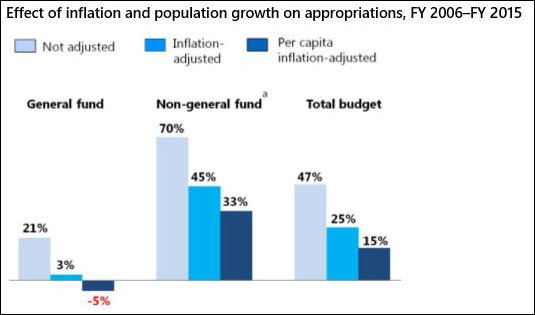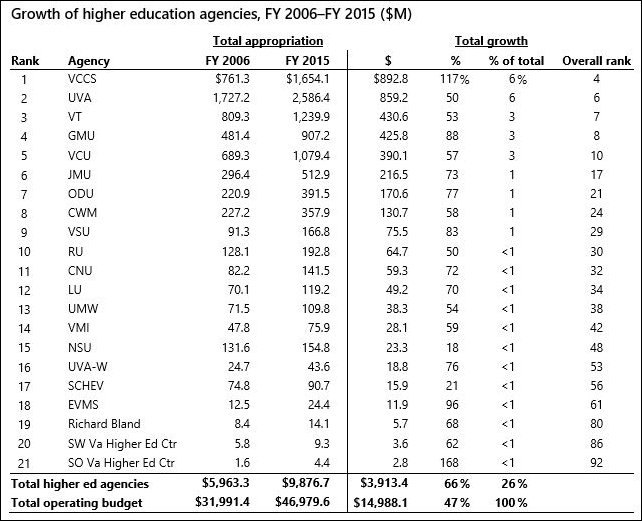
Virginia state spending, FY 2006-2015, adjusted for inflation and population growth. Source: Joint Legislative Audit and Review Commission
by James A. Bacon
After a decade of severe recession, sequestration and sub-par economic growth, Virginia state spending still increased 15% overall when adjusted for inflation and population growth. The spending increase occurred in the Non-General Fund, more than offsetting the squeeze in the discretionary General Fund, according to data published recently in the “State Spending: 2015 Update” report to the General Assembly.
When it comes to judging spending growth over time, raw numbers do not give a complete picture. To maintain a constant level of services (and assuming no gains in productivity), spending must increase to reflect inflation and population growth. Over the 10-year period in question, inflation amounted to 17.6% and population growth 8.9%. Even accounting for those two factors, Virginia state spending increased during a period of what has been widely perceived as a time of budget austerity.
General Funding spending has, in fact, been reined in. The 5% decline in total spending is all the more remarkable considering that the General Fund had to absorb a 75% increase, amounting to $3.7 billion, in Medicaid spending, leaving less for other programs.
By contrast, Non-General Fund spending has soared, reflecting federal contributions to Medicaid, tuition & fee hikes at public universities and tax increases yielding new funds for road, highway and public transit construction.
Aside from Medicaid, over which the state has limited control, Higher Ed has been the big winner, as can seen in this chart (numbers not adjusted for inflation):
Remember, inflation over this period was 17.6%. Many higher ed institutions also expanded enrollment, which also drove up costs. But spending far outpaced inflation and enrollment increases combined at most institutions.
Losers (by secretarial area) included Commerce & Trade, Agriculture & Forestry, and Natural Resources. State assistance to K-12 education increased 18% — enough to keep up with inflation, but not enough to keep up with increased enrollments.
(Hat tip: Jim Weigand)



